Red light in the morning, service warning.
We’ve all been there. A warning light comes up on the dashboard warning of something not quite right with your car. There’s no need to panic though. We’re here to help you understand what’s going on, and to get you back on the road.
Before we start, most of these lights show up as a different colour depending on the severity of the warning. Green and blue tend to be them working correctly, amber is something worth checking soon, and red means you probably don’t want to be driving the vehicle. As with all things, we recommend consulting your handbook for details, or contacting your local garage for help (HINT HINT).
Battery charge warning light

Your car’s 12v battery powers all of your car’s electronics, including lights and radio, and is charged in turn by the engine’s alternator. If you see this light come on, then there’s a problem somewhere with this system. Maybe the battery doesn’t have enough charge to start the car in the first place, or perhaps the alternator isn’t giving it enough voltage to keep it charged. Most people see this more often in the colder months, due to the slower chemical processes the lower temperatures cause in the battery itself.
Bonnet/Boot/Door
One of the less serious warnings your car can give you, this symbol simply means that one of your doors, the boot, or the bonnet are open. You can usually fix this by simply checking around the car and closing them fully, however if the light stays on then it might indicate a larger problem. If safe to drive, it’s in your best interest to get the vehicle to a garage as soon as possible to find out what’s gone wrong – nobody wants their bonnet to fly up in their face when going at 60mph.
Brake system warning light
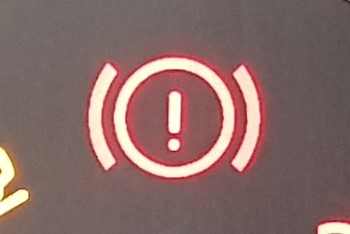
I could make a decent argument for the brakes being the most important part of a car. If the engine doesn’t work, you simply can’t drive away, but if the brakes fail on the motorway then you could be in all sorts of trouble.
This light tells you if there’s something wrong with that system, potentially coming on when you press the brake pedal, or constantly. Hopefully it just means that you’ve forgotten to take the handbrake off, or a cable is misaligned, but if it doesn’t go away pretty much immediately then it’s likely best to have a professional look at it to make any necessary adjustments.
Check engine light
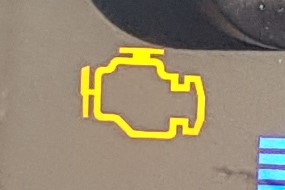
Honestly, if I see this come on, my stomach sinks. The source of sitcom jokes for years, it might indicate something as simple as loose cap or a spark plug that needs replacing, but it could also mean something a lot more serious, like a misfire. It’s pretty easy to ignore this warning, but we heavily recommend that you don’t! Fixing the issue at this point is much easier and cheaper than waiting until things progress past the point of repair.
Fuel warning light

Not all of the things your car warns you about have to be terrifying. I’m not going to pretend you need me to explain what this one means. In my Ford Focus, this comes on when I’ve about 70 miles of driving left – more than enough warning to pull into a fuel station and top up.
Glow plug (diesel only)
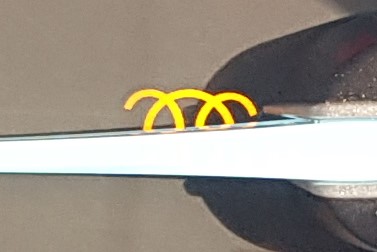
It took me much longer than I care to admit to learn what this symbol meant. I once thought that the diesel car I was in had some fault, it took so long for the engine to start.
Not so! Usually, your glow plug warms things up enough that a diesel engine can start. It tells you this by coming on in the first place and then going out when the car is ready to go. However, if you see the coil symbol while driving, it can mean something more serious is going on, and it’s worth having the problem diagnosed.
Oil pressure warning light
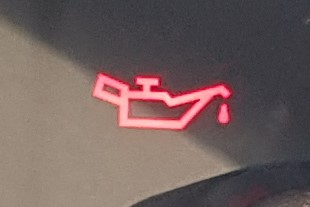
All cars need oil to keep all of their moving parts lubricated, but I dare say that you already knew that. This light can mean that your car doesn’t have enough oil to function safely and effectively, or that the pressure in the system has dropped (perhaps because of a leak).
If you see this dreaded symbol, check your dipstick to make sure you have enough oil to drive safely, and get your car to your local garage.
Seatbelt
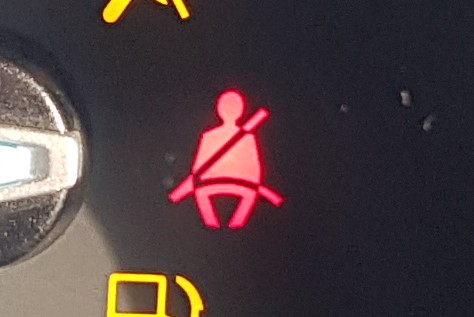
Any of you readers with kids will recognise this one! Most modern cars will give a warning if a passenger is detected in a seat without their seatbelt on. It’s usually as simple as getting them to belt up, but if the light stays on then it could be a problem with the sensor.
I recently learned that, on some cars at least, a heavy object (such as a battery jump pack) on the passenger seat is enough to set this warning off. If you’ve something big with you, it might be worth checking it’s not triggering the light.
Temperature warning light

Being a creature of metal, friction, and oil, your engine likes to stay in a particular range of temperatures. In the event of it getting too hot, it’ll throw you this little light, at which point you almost certainly want to get off the road as soon as possible (Opening the bonnet isn’t a bad idea either!). Check the level of the coolant, top it up if necessary, and get your car to the nearest garage.
Whatever you do, don’t open your radiator to check this while the engine is hot – you don’t want high temperature, pressurised liquid bursting onto you. We recommend using engine coolant to top up the reservoir, though are aware that many people use normal water.
Traction Control
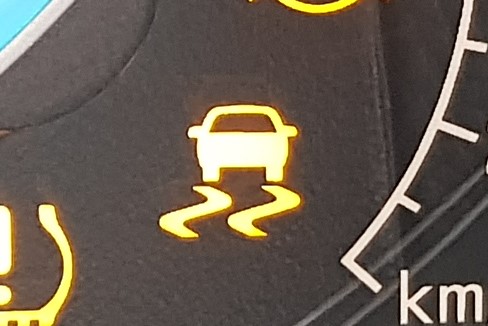
Today’s vehicles require traction control as standard, so as to help drivers during adverse road conditions. Simply put, it detects if any of the wheels are spinning at different speeds (usually due to not gripping the road surface) and then slows the rotation down if necessary.
You might notice this light flash amber if you put your foot down too quickly at a junction and wheelspin away, which isn’t great for your tyres. If it comes on at any other time, get it booked in for diagnosis by a technician – when the weather is good this can wait a short while, but in wet or icy conditions it’s recommended that it’s looked at by a professional as soon as possible.
Tyre pressure
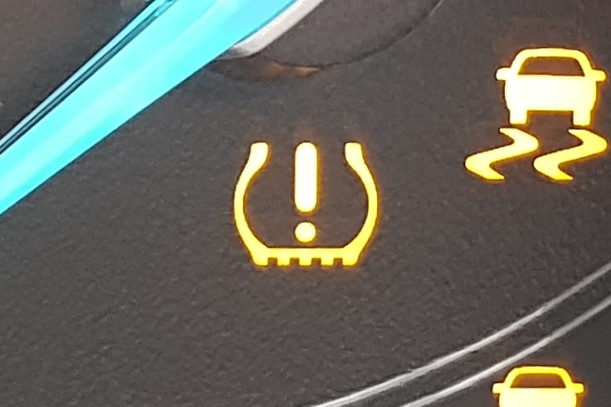
Though they behave a little differently depending on make and model, lots of modern cars can detect how well inflated their tyres are. This light lets you know if any of them are above or below the manufacturer’s recommended range of pressures. Though not necessarily life threatening in an immediate sense, it can lead to premature or uneven wear on your tyres. At best this is probably going to lead to an MOT failure, and at worst could lead to an accident.
Hopefully this has helped you learn a thing or two about how your car communicates with you. Remember, if you see any of these lights, don’t panic, just get somewhere safe and book your car in if necessary. All good garages are here to help you, after all.
Drive safe out there.
